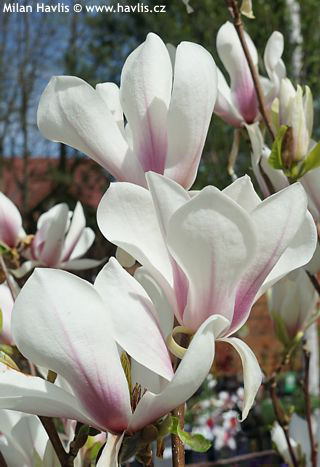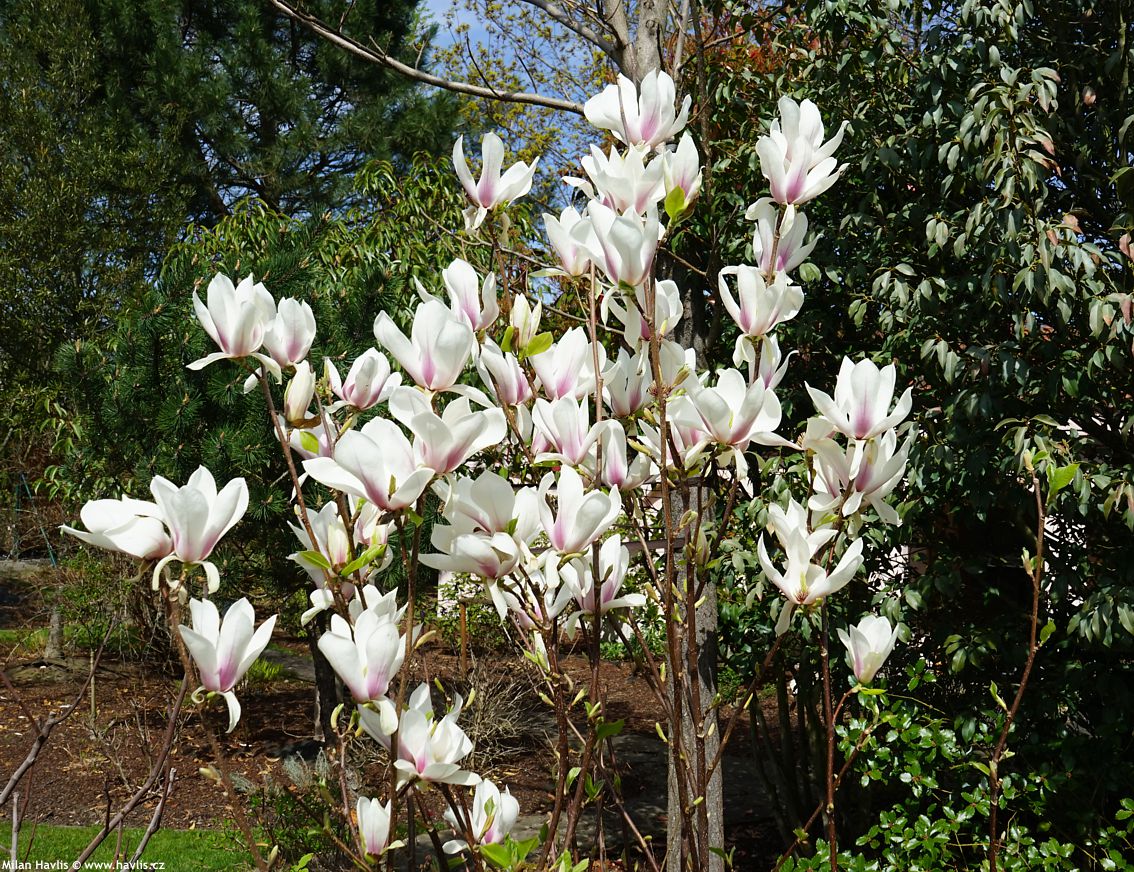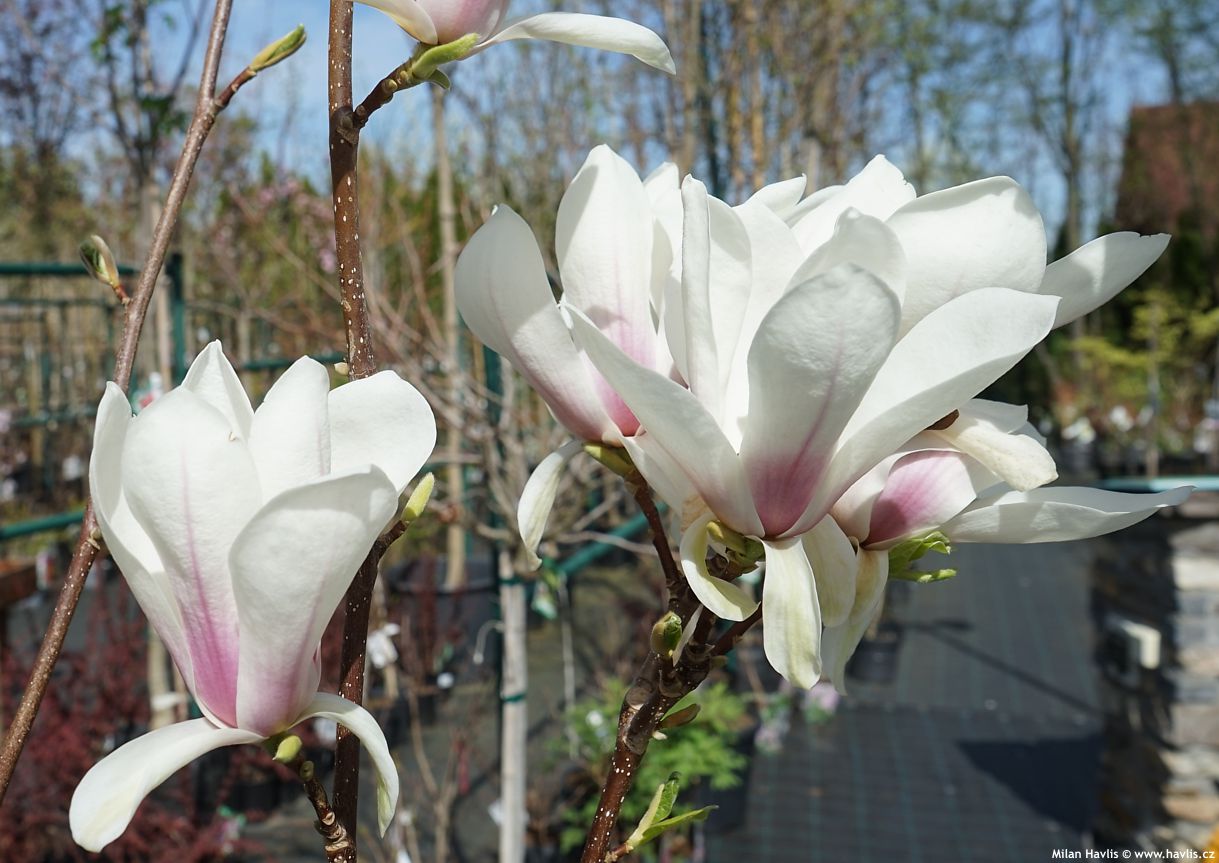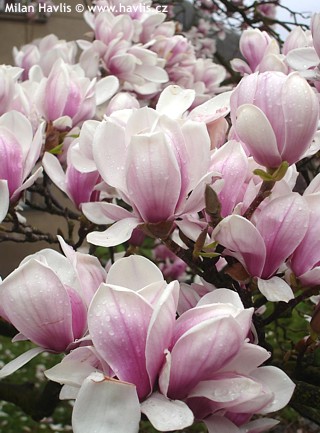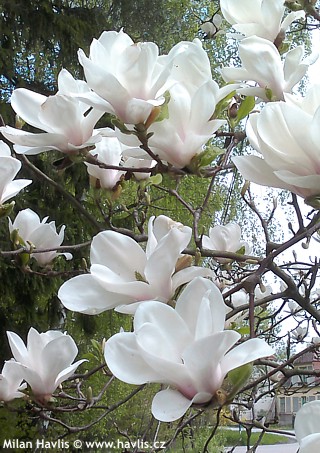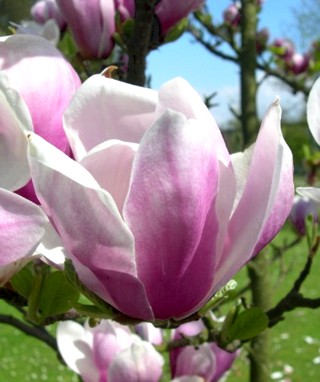Magnolia x soulangeana 'SUPERBA' saucer magnolia
size/type
small tree,taller shrub
usual height
4-6m
usual width
3-4m
leaves
deciduous broadleaf
colour of leaves
flowers
showy
colour of flowers
blooming time
April
location
full to partial sun
soil type
acidic (peaty) to neutral
soil moisture requirements
evenly moist (dislikes drought)
USDA zone (lowest)
5 (down to -29°C)
winter protection
for zone 5+6

for zone 7

categorized
Magnolia
It was in 1826 when the very first bloom of this famous saucer magnolia saw the world. It was bred by French botanist Etienne Soulange-Bodin who 6 years earlier had made a cross between m. denudata and m. liliflora. If only he had known that he had created a beauty that would adorn so many private estates as well as public parks and arboretums and become the herald of a true spring. Thanks to its first parent, it belongs among the earliest magnolias as it already begins to bloom from late March if the onset of spring is warm enough and frost-free. The plant immediately gained attention and admiration and not long after, in 1844, there was the first specimen planted in Czech Republic in Královská obora in Prague. When we realize that it was not only long before the Internet and cell phones, but also before the classic telephone (which was patented by Alexander Graham Bell in 1876), less than twenty years is a historically insignificant period. And should you like to know that, Bell’s telephone idea was not the first and it seems that he had nicked it from Antonio Meucci from Italy, who developed it as early as 1849.Description of the plant:
Superba is a saucer magnolia variety which differs from the original hybrid in slightly paler flowers with longer petals, later onset of flowering and a more subtle habit. The flowers are approx. 10 cm high and up to 20 cm wide when fully opened, and the individual petals are narrower and not as convex as in the original hybrid. Their colour is white with a faint purple flame from the calyx upwards, which slowly fades away. If you have a good sense of smell, you will also recognize a slightly different perfume which is also relatively strong and spicy-sweet but carries a bit more of a citrus undertone. In the second half of summer, it sporadically repeats flowering, but the flowers do not open fully.Superba blooms 5-7 days later than the original hybrid, so if late frosts come just when the earliest species are about to bloom or are blooming already, Superba still has enough undeveloped buds to survive the frost and show undamaged flowers later. It grows distinctly upright and dense without arching side branches even at a young age, and in maturity it forms a rounded shape. Deciduous leaves are broadly ovate, fresh green and turn yellow briefly in autumn. Thanks to the abundance of healthy and beautiful leaves, a fully leaved-out magnolia is almost impenetrable and beautiful even without flowers. You will most often come across shrubs or carefully trained multi-trunks, but it is also very beautiful as a single-trunk standard tree.
It is probably a seedling selection, where either another magnolia species contributed with its pollen, or it was a natural mutation of genes which is common when propagated by seeds. The variety was first described in 1854 by Robert Buist from Philadelphia, USA, and introduced in Europe by the Belgian nursery of Louis van Houtte which began selling it in 1867. There is also an assumption from 1891, supported by J. Cels from France, that it is the same variety as an Alexandrina cv. which we do not adopt due to quite different traits.
Magnolias are not supposed to be pruned. You can prune old shrubs if ill, or trim them to shape or to reduce size, or make an elementary cut to young plants of unsightly or unhealthy appearance. Do this as soon as possible after flowering to secure setting of flower buds for the following year. Be aware that each magnolia can respond differently to pruning. Being quite early to flower it is recommended to avoid the warmest and protected sites. Quite the contrary: let it feel the chilly spring breeze owing to which it will not open its flowers precociously.
Deciduous magnolias are quite easy plants. All they need is light, well-drained, acidic soil with equal moisture throughout the year. Once established they can do with occasional drought but will not look as nice as the ones with regular watering. Just pay attention to how to plant your magnolia. First, find it a spot where it will live forever and ever. It does not like transplanting. And as it makes shallow roots reaching well over its spread stay away from disturbing the roots by digging or messing about around it. Just cover the soil with bark mulch and do not plant anything else near it after say the second year after planting onwards. You could damage the very important top roots that absorb maximum moisture and nutrients from the soil. Also avoid planting magnolia too deep – it could be its grave. Keep it mulched at all times in order to retain constant moisture. It is fully hardy to about -29°C (USDA zone 5).
Last update 08-04-2024
QUICK PRICE OVERVIEW
CURRENTLY SOLD OUT
WANT TO TRY A SIMILAR PLANT?












